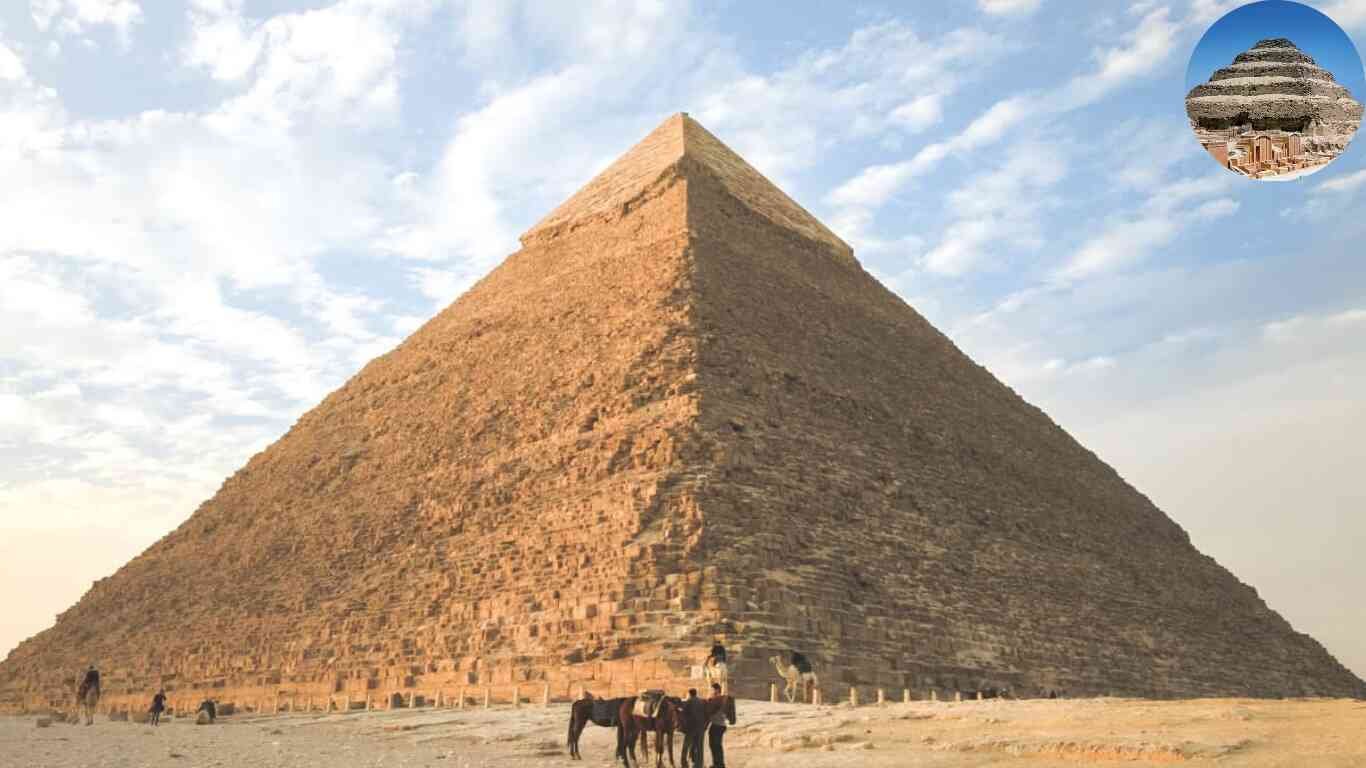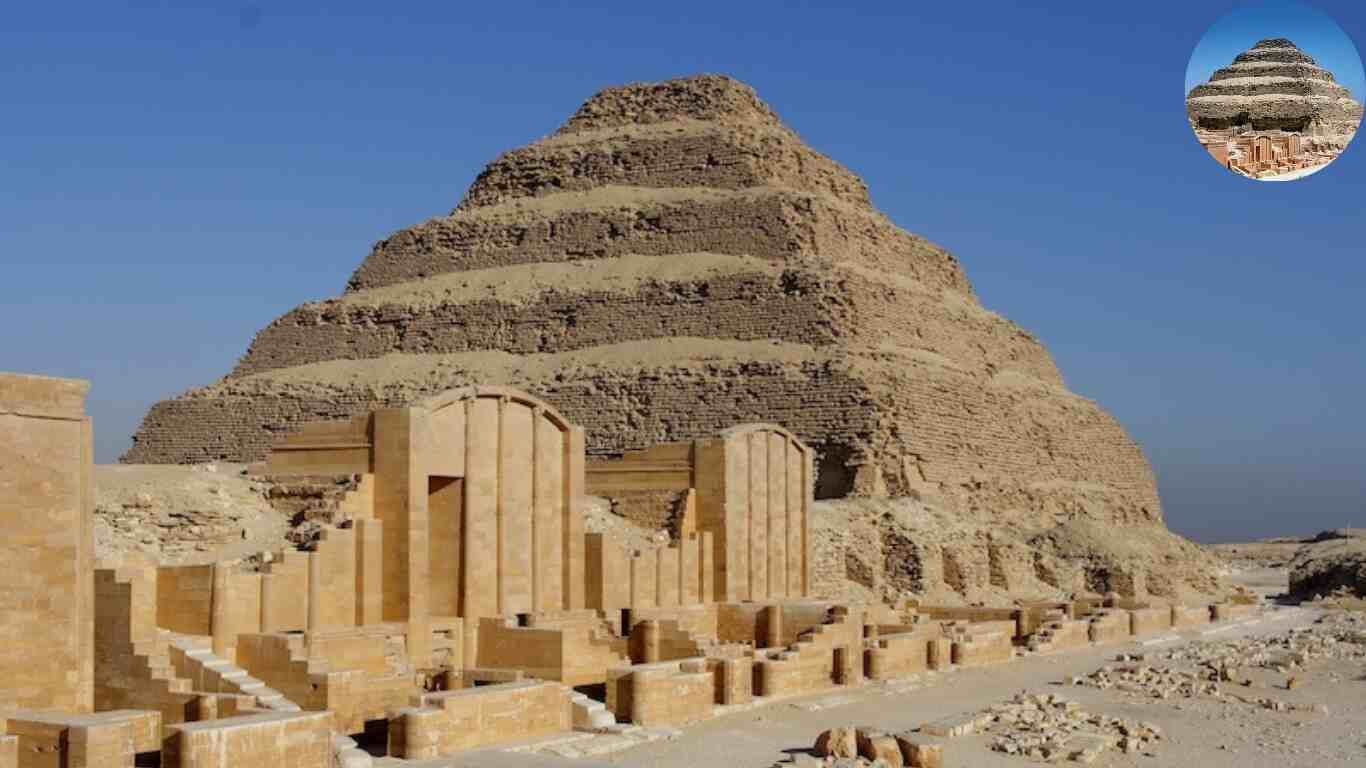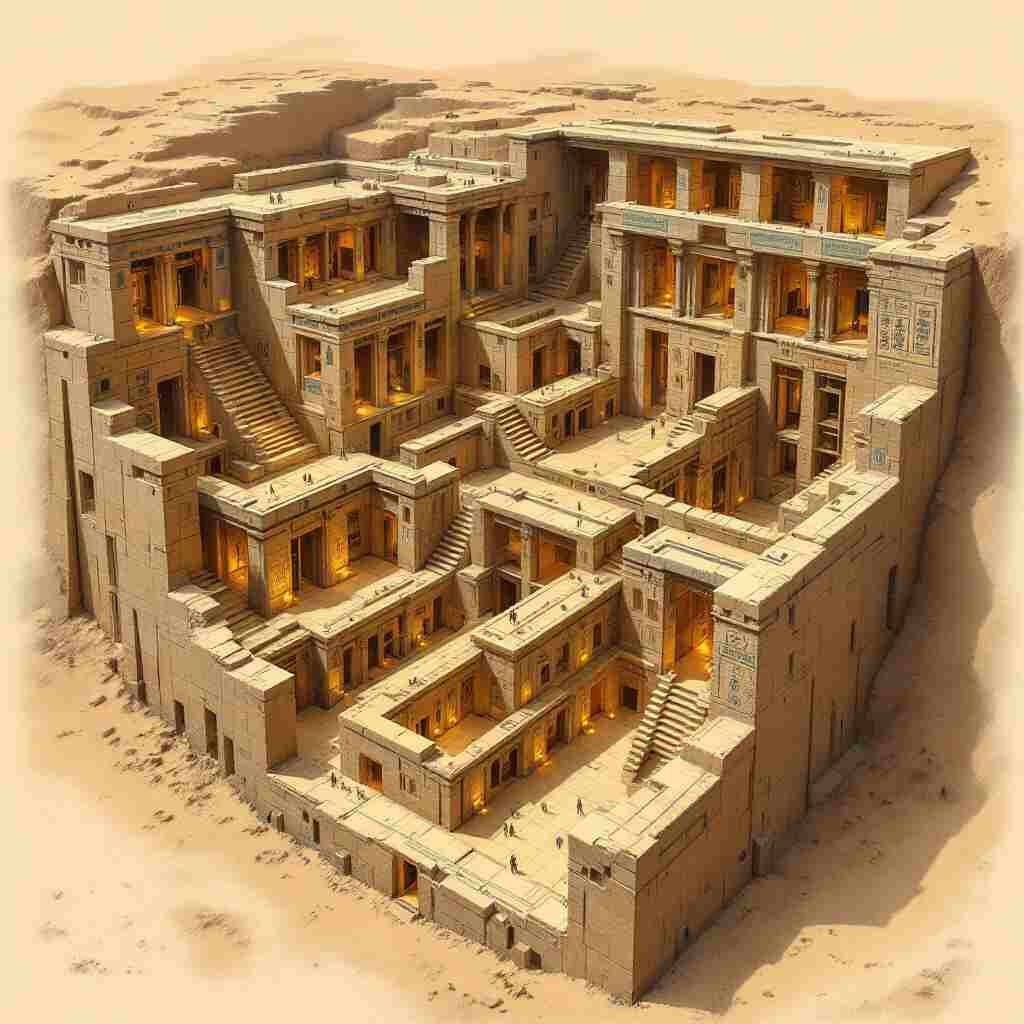Understanding Egyptian tomb architecture opens a window into the ancient civilization’s profound beliefs about the afterlife and the enduring legacy of its rulers and nobles. Egyptian tombs, often referred to as “houses of eternity,” were meticulously designed to serve both as eternal resting places for the deceased and as sacred spaces for rituals and offerings to ensure a safe passage and sustenance in the afterlife. From the early mastabas—rectangular, flat-roofed tombs made of mudbrick or stone—to the revolutionary Step Pyramid of Djoser and the iconic smooth-sided pyramids of later dynasties, each architectural form reflects evolving religious practices, social status, and technological advancements. Key features such as burial chambers, mortuary chapels, false doors, and intricate tomb art reveal a complex interplay of function, symbolism, and artistry that defined ancient Egyptian funerary architecture.
The Purpose and Significance of Tomb Architecture
Architecture of Egyptian tombs served as a gateway to the afterlife.The belief that life continues after death was reflected in it. The structures were carefully designed to ensure the deceased’s safety.
These tombs were not just resting places; they were elaborate complexes filled with symbolic meaning. They reinforced social status and demonstrated wealth, showcasing artistry and craftsmanship.
their architectural features aimed to protect against grave robbers. The intricacies of each design acted as a safeguard for both physical treasures and spiritual journeys.
The significance extends beyond individual burials; it highlights the Egyptians’ understanding of life, death, and eternity. Tomb architecture became an essential aspect of cultural identity, embodying religious beliefs and societal values in stone form.
Key Features of Egyptian Tomb Design
Symbolism and functionality combine in Egyptian tomb design. The structure often begins with a long passage leading to the burial chamber, ensuring that the deceased’s journey into the afterlife was both sacred and secure.
Walls inside these tombs are frequently adorned with intricate carvings. These depict scenes from daily life, religious rituals, or mythological tales intended to assist the soul in its next phase. Such artistry not only highlights their cultural beliefs but also showcases advanced craftsmanship.
. These were vital for maintaining air quality within the sealed spaces, illustrating an understanding of practical needs even in death.
The materials used vary significantly; limestone and granite are common choices for their durability. This choice reflects both aesthetic values and a desire for permanence, showcasing how Egyptians approached life—and death—with intention.
Types of Egyptian Tombs: Mastaba, Pyramid, and Rock-cut Tombs
Egyptian tombs come in various types, each reflecting the beliefs and practices of their time.A mastaba served as a burial structure for elite individuals with its rectangular shape and flat roof.Inside, they contained chapels to honor the deceased.
The pyramid represents a leap in architectural complexity. With their iconic triangular shapes, these monumental structures were built during the Old Kingdom to facilitate the pharaoh’s journey into the afterlife. The Great Pyramid of Giza remains a testament to this ambitious design.
Carved directly into cliffs or mountainsides, these tombs provided natural protection against grave robbers. They often featured elaborate interiors with intricate carvings that depicted scenes from daily life and spiritual rituals essential for ensuring safe passage to eternity. Each style holds unique significance within ancient Egyptian culture and showcases remarkable engineering skills.
Decorations and Symbols in Egyptian Tombs
Egyptian tombs are a canvas of artistry and spirituality. The walls often tell stories through intricate carvings and colorful frescoes. Each symbol holds profound meaning, reflecting beliefs about the afterlife.
The scarab beetle represents rebirth, as does the ankh, which symbolizes life.Hieroglyphics narrate tales of gods and daily activities in ancient Egypt, providing insight into their culture.
Decorations were not just for beauty; they served as guides for the deceased’s journey in the afterlife. Offerings depicted on walls ensured that provisions would be available to them beyond this world.
The careful arrangement of these elements reflects a deep understanding of cosmology and mortality. Every detail was intentional, designed to honor both the dead and their connection to eternity.Scholars continue to be captivated by the meanings underlying these symbols.
Discoveries and Important Examples of Egyptian Tomb Architecture
Egyptology was transformed by the discovery of Tutankhamun’s tomb in 1922.Howard Carter unearthed treasures that revealed the opulence and artistry of ancient burial customs.
Over 60 tombs were carved into limestone cliffs in the Valley of the Kings.Each offers unique insights into royal life and beliefs about the afterlife.
Djoser’s Step Pyramid is an architectural marvel.Constructed during Egypt’s Third Dynasty, it marks a significant evolution from simple mastabas to monumental pyramids.
Not all tombs are grand; some rock-cut chambers demonstrate practical approaches to burial. These spaces show how geography influenced design choices across different periods.
Recent archaeological finds continue to reshape our understanding. Advanced technology unveils hidden layers within these structures, revealing stories long buried beneath sand and stone.
Modern Day Preservation and Study of Egyptian Tombs
Modern-day preservation and study of Egyptian tombs have become vital for understanding ancient cultures. Archaeologists, historians, and conservationists collaborate to protect these irreplaceable sites from decay and vandalism.
Advanced technologies like 3D scanning are now employed to create detailed models of the tombs without disturbing their fragile structures. This allows researchers to analyze architectural features more thoroughly while ensuring that future generations can appreciate these monuments.
educational programs aim to raise awareness about the significance of preserving Egypt’s heritage. Local communities often play a crucial role in protecting their cultural landmarks, fostering pride in their history.
The architecture of Egyptian tombs continues to fascinate us as new discoveries emerge from the sands of time:mastery in design, spiritual symbolism, or monumental grandeur? Each aspect contributes uniquely to our understanding and appreciation of this remarkable civilization’s enduring legacy.
For home architecture, design and home improvement tips visit (shine gold home).
